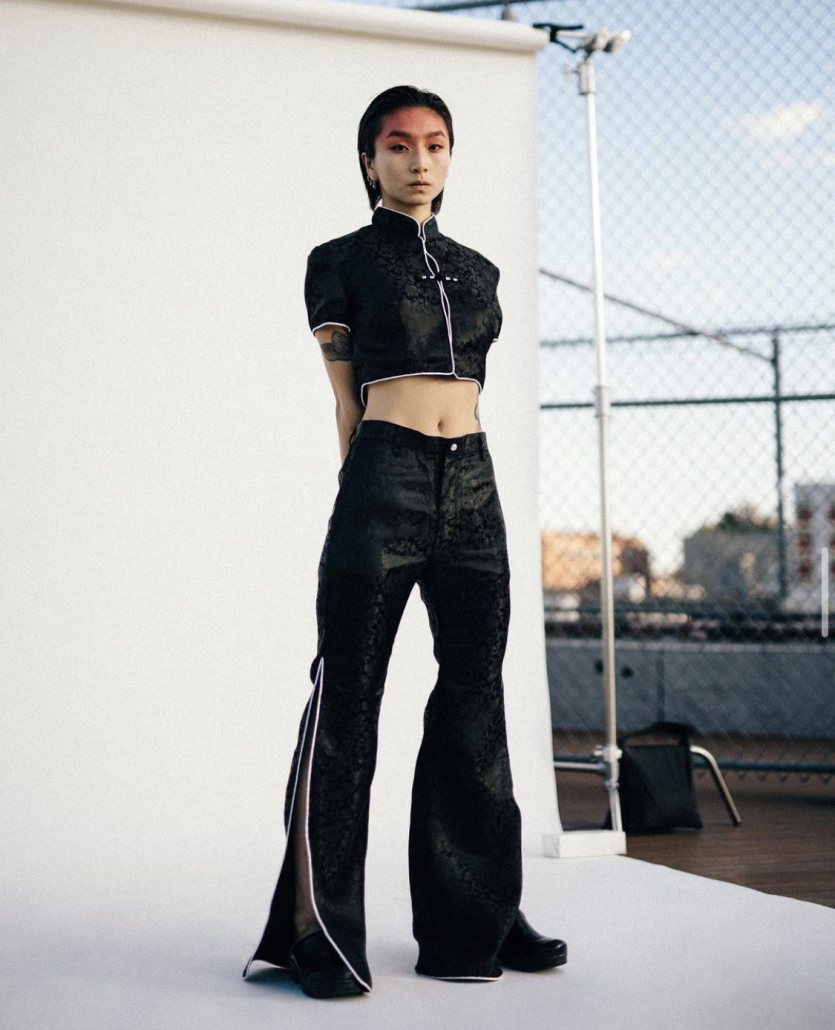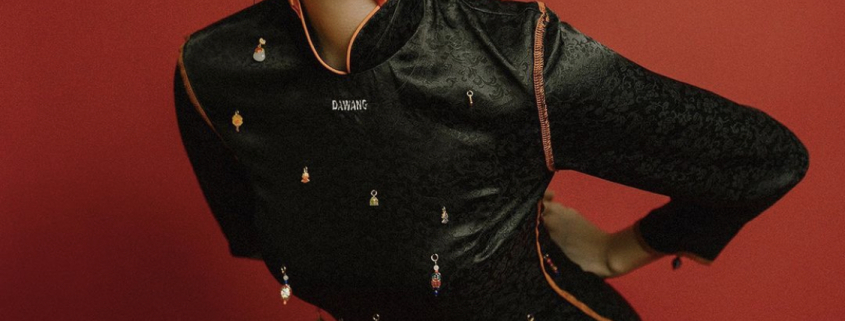DAWANG celebrates modern chinoiserie
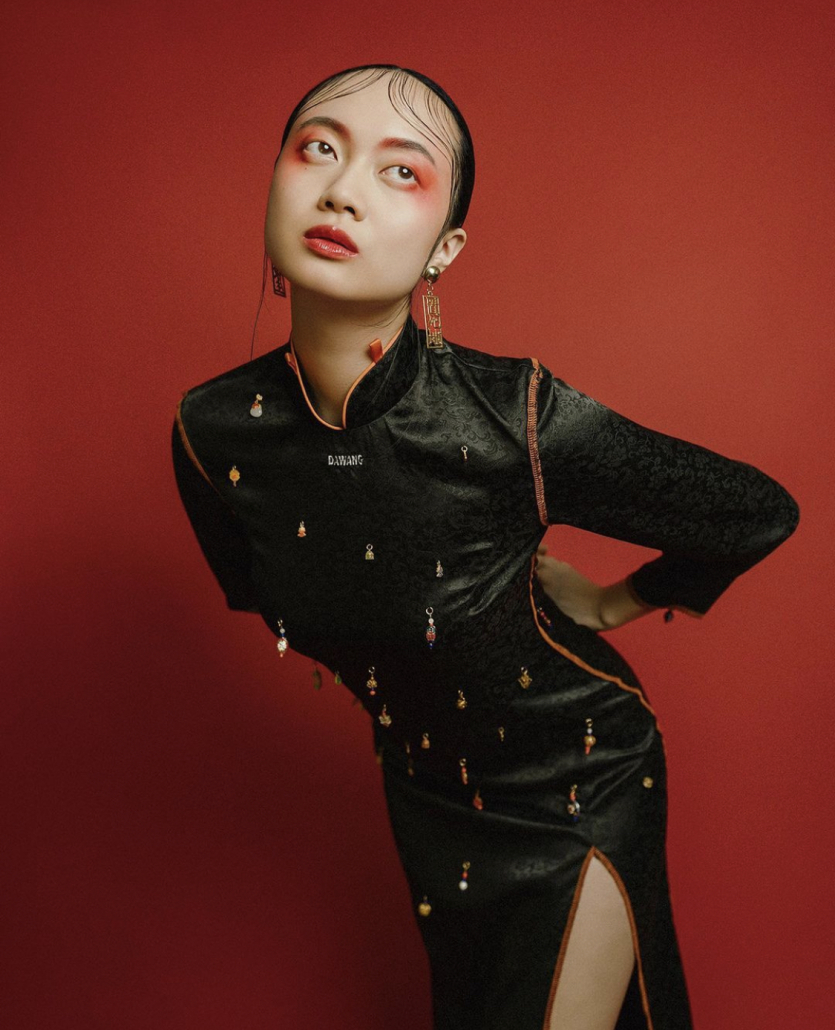
The interlacing of cultural elements, especially in fashion, has long been problematic in America. The line between appropriation and appreciation can be sharp for designers looking to celebrate cultural overlap — particularly when larger corporations so frequently cannibalize traditional garments with no respect for heritage or authenticity.
As difficult as it can be to toe this line, DAWANG is strutting a fearless tightrope walk.
DAWANG, a contemporary streetwear brand based in New York City, has been devoted to honoring and modernizing Chinese aesthetics since its establishment in 2018. Founder Jingwen Wang — whose friends call her Daisy — has long loved fashion, but hadn’t settled on a specific creative direction until her final project before graduating from The New School’s Parsons School of Design.
“My senior thesis was in 2017, and that was my first mini collection of how I wanted to interpret modern Chinese,” Wang said. “After that I was just heading towards graduation and I was like ‘I’m not sure what I’m doing; I know how to design, I know how to make clothes, but I don’t know how to express my aesthetics, my culture, to other people.”
To hone in on that skill, Wang spent a fifth year at Parsons pursuing a minor in fashion studies, specifically looking to develop her understanding of streetwear subcultures. In studying the hype around brands like Supreme, Wang saw parallels with the rising popularity of Asian culture in the city around her.
“When I first came here in 2013, we had one boba shop within 20 blocks of Manhattan. And when I was graduating Parsons, we had like 10 different boba shops within a 20-block radius. We can feel it, that Asian culture, our food, everything is being more accepted is becoming mainstream… then why not fashion.”
In studying the qipao, a garment dating back to the 16th century’s Qing dynasty, Wang continued observing the combination of Eastern and Western design but was frustrated with a perceived imbalance between how Chinese and American cultures accepted each other.
“As a Chinese [person], I didn’t even know specifically that our qipao was a mix of West and East — that was the representation of Chinese people in the early 20th century starting to accept Western culture, starting to be like, ‘Oh, we don’t have to hide all our body parts, we can show off a little bit of skin, we can open the slits up a little bit’ … From that point of view, I was like, ‘Wow, look at how Western we are now … if we can accept the Western culture in such a big volume, why can’t Western culture accept us?’”
Wang describes this struggle, of creating garments that authentically accept and celebrate the combination of Chinese and American design elements, as a driving intention behind her work on DAWANG.
“I want to showcase to people of all cultural backgrounds what modern Chinese can be, how we can appreciate each others’ culture as long as you know what we’re talking about. But that is still a problem, a line that we’re trying to slowly remove, that people are like ‘Why are you wearing our stuff? Are you appreciating it? Or are you just, you know, finding it as a costume?’ … we want to portray modern Chinese in [more of] a lifestyle, more streetwear, more approachable way.”
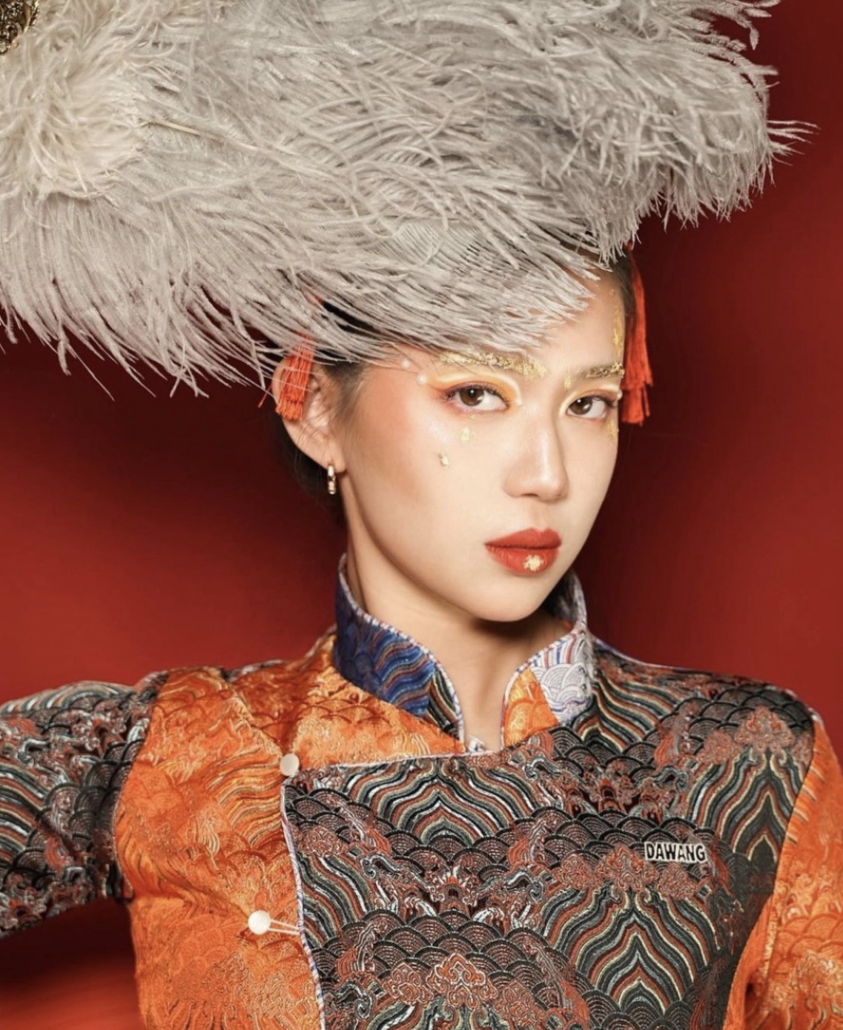
In just four years, Wang’s brand has built an eminent reputation in New York and Los Angeles’ chinoiserie scenes, complete with a polished online presence that one might expect from such a young designer. On DAWANG’s site, along with gorgeous velvets and brilliant patchworks sit blog posts about the history of the qipao and brocade.
Julia Lin, a senior majoring in journalism, has spent about a year helping Wang with those blog posts but was first introduced to DAWANG while seeking a piece that fit Wang’s vision. Her mother, Judge Tana Lin, who became the first Asian American federal judge in Washington state after being sworn in last December, was looking to “make a statement” at her Senate nomination hearings with a custom suit.
“[My mom] wanted to represent Chinese Americans, because she was the first one in our state in that position. And so I just DM’d Daisy, and was like, ‘Hey, like, here’s the situation,’ and Daisy was super pumped about it,” Lin said.
Lin’s work with Wang revolved around DAWANG’s “storytelling” aspects — blog posts and a social media presence which further describe the brand’s mission. While she found the experience rewarding in many ways, she particularly resonated with Wang’s aspirations behind her designs.
“Working with [Daisy] was a great opportunity for me,” Lin said. “I’m obviously passionate about the Asian American experience and representing our culture. I feel like you don’t see that a ton in the media, you don’t see that necessarily in fashion, in the ways that Daisy does it. Or if you do, it’s not by an Asian designer, or there’s some sort of weird, cultural appropriation undertones. So getting to work directly with Daisy and help her tell the stories of what these clothes mean to her and how she wants them to be accessible to everyone has been really cool.”
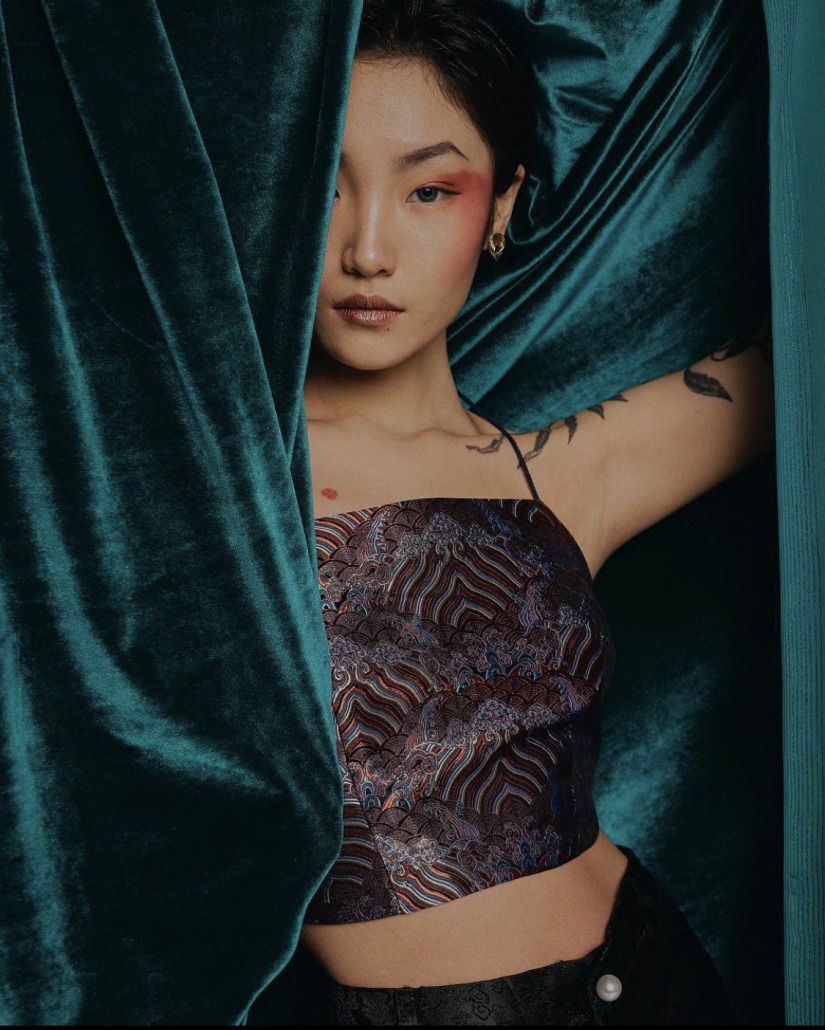
While the brand remains modest in size for now, fans in Wang’s circles and beyond have expressed appreciation for DAWANG’s work.
“I really enjoy seeing a refreshed look on Chinese-inspired clothes and garments,” said Annalee Swagerman, a freshman at The New School. “I know some of the work is in older, mainland China styles, but it’s really nice to see an urban version of older styles.
Most valuable for her, Wang describes receiving an immense amount of support from the Asian community in New York surrounding her work — and not just from other designers. Creators of all stripes, from seltzer brand founders to bestselling authors, have offered Wang advice, collaboration and even home-cooked meals based on their shared interest in representation.
“Because I’m doing a startup that’s related to our culture I have the opportunity to meet up with a lot of different founders — within the industry or not — who are working pretty much towards the same goal: to celebrate Asian cultural aesthetics … everybody has been so supportive, even if we are from different countries like Korea, China, Japan, but here we feel like we belong together, like we belong within one community.”
Wang expressed that this sense of belonging has been especially important during the last few years’ rise in Anti-Asian hate. While dismayed by the prevalence of such racism in America, Wang feels that the celebratory intent of her’s and others’ work has helped her find peace — a sentiment shared by fans.
“Coming from someone who is Asian and who has been at the receiving end of hatred for our culture, to see it be urbanized and really appreciated, celebrated and brought back … it’s really exciting,” Swagerman said. “I really enjoy what they’re doing as an Asian person.”
Even beyond its roots in the Chinese American community, DAWANG has much to contribute to the fashion of cultural exchange.
“I think what DAWANG has to offer is a really new perspective on what it means to wear and share your culture,” Lin said. “Especially in mainstream fashion, oftentimes when you’re seeing designs that are made by Asian Americans, it’s more traditional clothing or it’s that qipao style, but taken by big corporations — like a PrettyLittleThing or a boohoo — and done in a way where the history and cultural sensitivity is lacking. But for Daisy, I think she brings a unique, honest and young point of view.”
